When Gustav Klimt (1862-1918) started working on painting in honor of a famous German Composer, he didn’t know that it would become one of his most famous works.
He only used light materials as it was intended to serve as a decorative painting for a temporary exhibition in Vienna. Today, it’s preserved very meticulously because of this.
Let’s take a closer look at some of the most interesting facts about the Beethoven Frieze by Gustav Klimt, a massive artwork by the famous Art Nouveau artist.
1. It was completed in the first couple of years of the 20th century
Gustav Klimt is considered to be an Art Nouveau artist because of the fact that he was one of the leading figures of the Vienna Secession movement. This was an offshoot of Art Nouveau based in Austria’s capital.
The Austrian artist did start his career as an academic painter. Together with his brother, he earned dozens of commissions to decorate some of the most famous buildings in Vienna.
Gustav and his brother Ernst even earned the Golden Order of Merit from Emperor Franz Josef I of Austria in 1888. This was after they completed the murals at the Burgtheater in Vienna.
Everything changed for Gustav in 1892, the year that both his father and Ernst died. He radically changed course and developed a more personal style.
He became a member of the “Wiener Sezession” or “Vienna Secession” movement in 1897 and stayed with the group until 1908. He completed the Beethoven Frieze between 1901 and 1902.
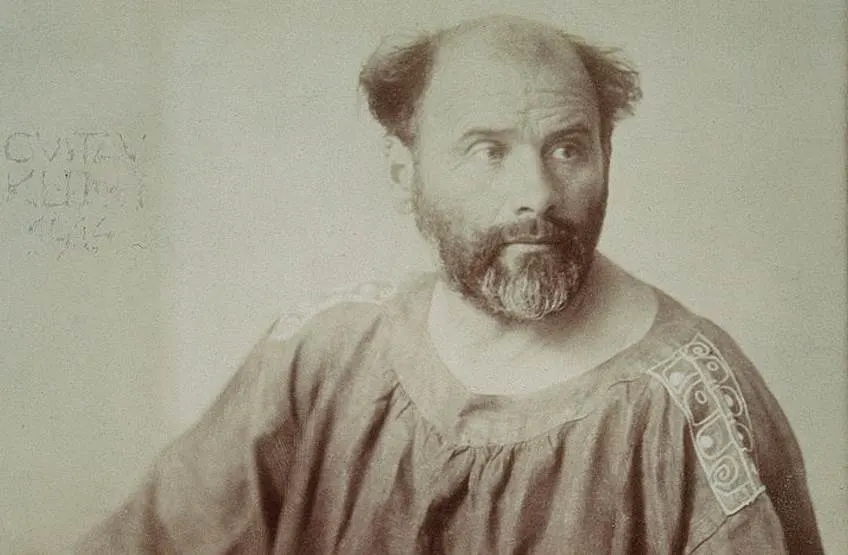
2. Klimt painted it for the 14th exhibition of a Viennese art movement
The Beethoven Frieze is a large artwork that was painted on the walls of the Secession Building in Vienna. This was the headquarters of the Vienna Secession art movement.

This was also the place where they held their exhibitions, including the 14th exhibition that was dedicated to the German composer Ludwig van Beethoven (1770-1827).
He painted the work directly onto the walls of the building using light materials such as Charcoal, graphite, black and red chalk, and pastel.

3. The frieze depicts human desire in a world of suffering
The frieze features 3 monumental murals in the typical art Nouveau style of Gustav Klimt. The entire concept was intended to serve as a commemorative piece of Beethoven’s work.
The left is an allegory of human desire and the subsequent suffering. The central wall features most elements as we can see:
- Typhoeus the giant, an unbeatable creature for even the gods.
- His three daughters and three gorgons are right next to the beast.
- Allegories of the wishes and desires of mankind fly above their heads.
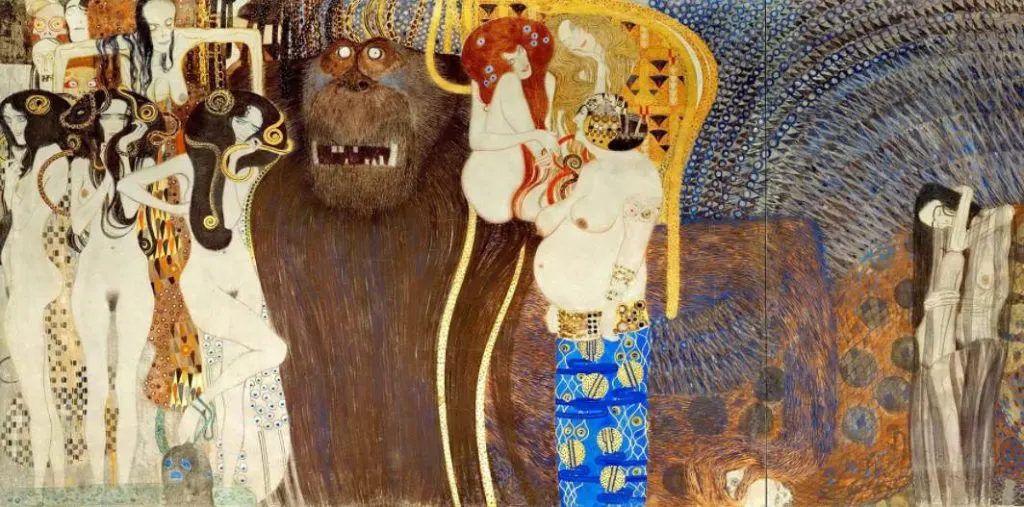
4. The right wall provides features the conclusion of the frieze
While the left and middle walls point out the problems of humanity and the eternal struggle, the right wall offers the solution.
Poetry is considered to be the ultimate path to happiness. Arts are suggested to be the ultimate way to find peace and joy in a world in which the odds are stacked against us.
The depiction of poetry eventually leads to a choir of angels singing as the doors of Heaven are opened. Through this, pure love and joy can be embraced.
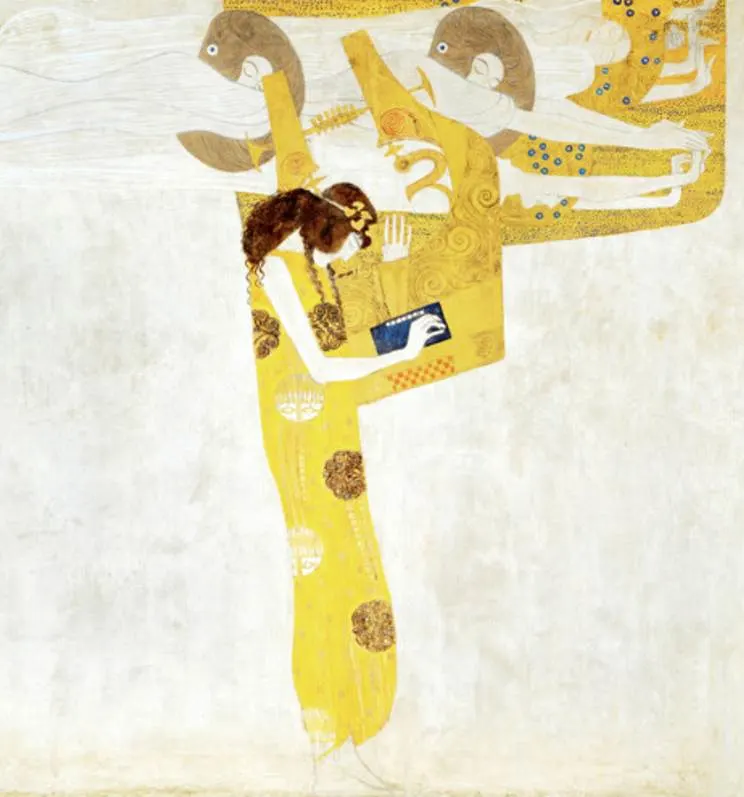
5. The portrait of Beethoven features the face of a famous Austrian composer
The left wall features a heavily armed man who is supposed to represent Beethoven. He represents the human beings who produce art as a means of finding happiness.
One of the most intriguing facts about the Beethoven Frieze is that the face of this man isn’t that of German composer Ludwig van Beethoven but that of Austrian composer Gustav Mahler.
Mahler was a friend of Gustav Klimt so he used him as a model for this remarkable work of art.
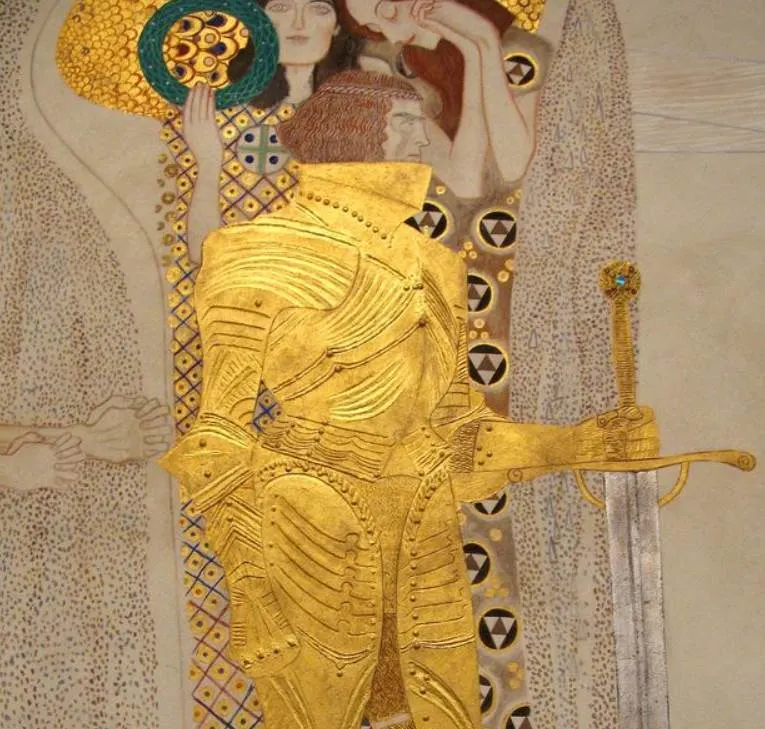
6. It was adjoined by a large sculpture of Beethoven during the exhibition
The Beethoven Frieze was only one of the attractions of the 14th Vienna Secessionist exhibition dedicated to Beethoven.
One of the most fascinating artworks at the exhibition was a polychrome sculpture of Beethoven produced by German artist Max Klinger (1857-1920).
Klimt’s painting was featured in an adjoining room of the Secession building. Klinger’s sculpture was placed in the main hall and served as the centerpiece of the exhibition.
Both artworks received a rather lukewarm reception and were criticized by contemporary critics as well.
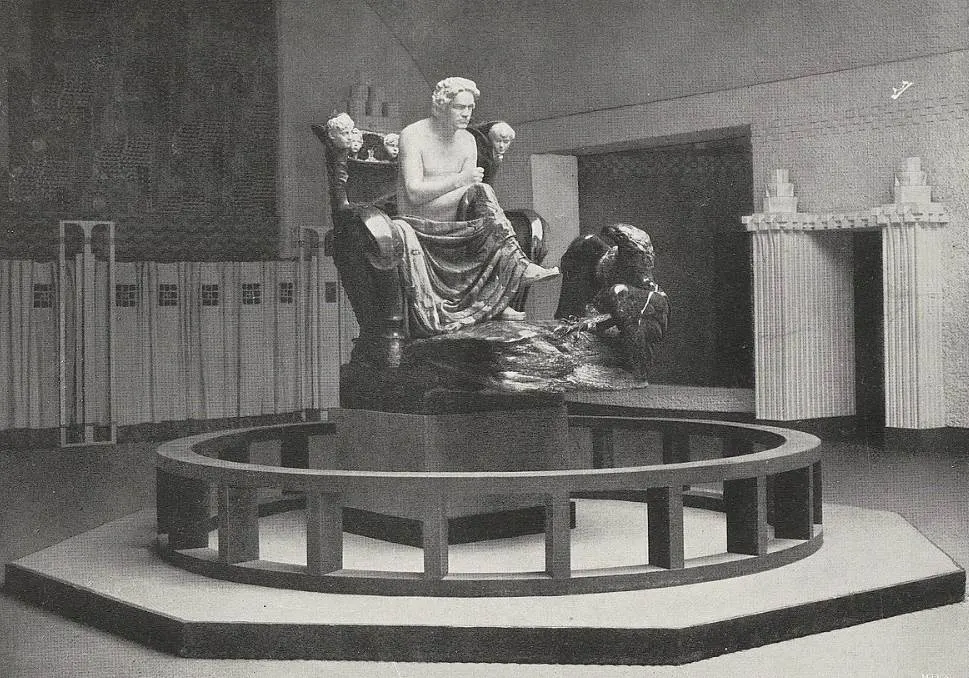
7. How big is the Beethoven Frieze by Gustav Klimt?
The Beethoven Frieze is a monumental work of art that completely covers three walls of a relatively large space.
It has dimensions of 2.15 x 34.13 meters (7 x 112 feet) as it circles all around the room.
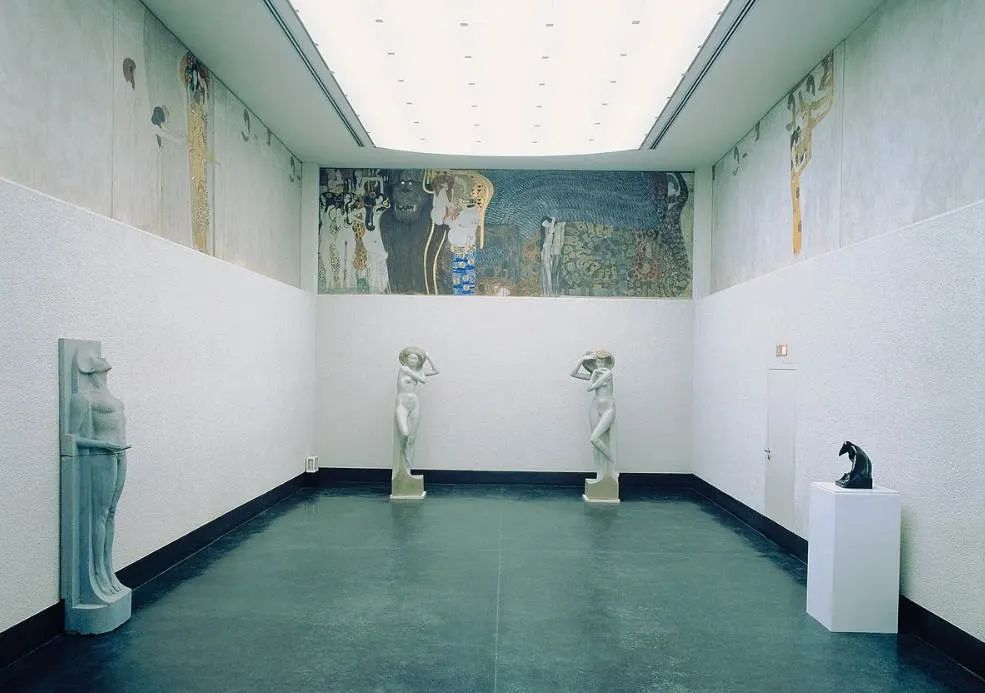
8. Where is the massive artwork located today?
The painting wasn’t produced to become permanent work of art but rather as a decoration for this particular exhibition.
Although it was heavily criticized by academic critics, it was quickly deemed to embody the spirit of the Vienna Secession art movement.
It was, therefore, carefully moved to a special temperature-controlled room inside the basement of the Secession building in Vienna. This was needed to preserve the work that was produced with light materials.
It didn’t go on public display until the year 1986 but can now be admired in this remarkable feat of Art Nouveau architecture in Austria’s capital.
It’s on loan here from the Österreichische Galerie Belvedere, a popular museum housed at the opulent Belvedere Palace.

